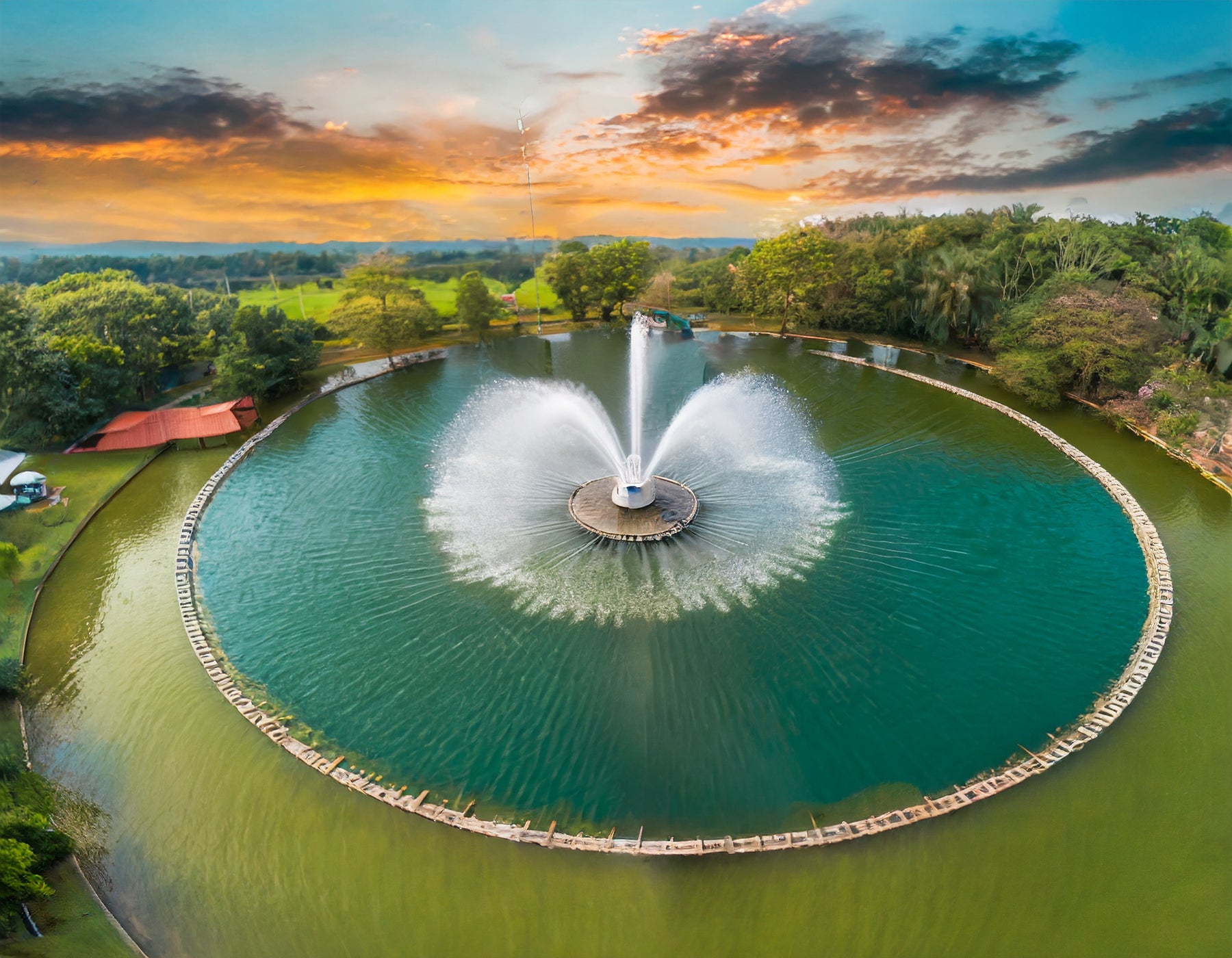
How to Improve Your Pond's Health and Beauty with Aeration
What are Lake and Pond Aerators?
Lake and pond aerators are devices that add oxygen to the water in ponds and lakes. This is important for several reasons:
- It helps to keep fish and other aquatic life healthy.
- It prevents the growth of algae and other unwanted plants.
- It helps to prevent the pond from freezing in the winter.
Types of Aerators
There are two main types of aerators:
-
Surface aerators: These aerators sit on the surface of the water and create a spray of water that adds oxygen to the water.
-
Diffused aerators: These aerators use a series of small tubes to release bubbles of air into the water.
The Importance of Proper Pond Aeration
**Diagram: The Benefits of Proper Pond Aeration and Circulation*
*Consider the diagram above to understand the benefits of ensuring your pond has proper aeration and circulation.**1st Quarter of the Diagram**
- In an average pond without proper circulation, various layers of water exist, with temperatures decreasing as you go deeper.
- These deeper layers often lack oxygen, reducing fish habitat and inhibiting bottom-dwelling food sources like worms and crawfish.
- Oxygen-starved Pond bottoms hinder the decomposition of organic debris, resulting in the accumulation of unpleasant, anaerobic sludge, which can make the pond shallower.
- Such ponds are also more susceptible to fall turnovers and potential fish kills.
**2nd Quarter of the Diagram**
- For ponds less than 6 feet deep or when rapid oxygenation is needed, surface aeration is the solution.
- Surface aerators break apart water as it splashes down, increasing the surface area for gas exchange.
- This method rapidly infuses oxygen into the water and is ideal for shallow ponds due to its ability to function in minimal water depths.
**3rd Quarter of the Diagram**
- Deeper ponds (over 6 feet) benefit from bottom aeration.
- Rising bubbles move through the water column, pushing stagnant, oxygen-depleted water to the surface.
- Harmful gases, mainly methane and sulfur compounds, vent into the atmosphere, while oxygen is introduced into the water.
- The efficiency of this style of aeration is directly related to the volume of water the bubbles transport, making it more effective in deeper water.
- Placing diffusers deeper results in better circulation, as each diffuser can move more water at greater depths.

How to choose an aerator
The size of the aerator you need will depend on the size of your pond or lake, the depth of the water, and the number of fish and other aquatic life in the water. You should also consider the type of aerator that will work best for your pond or lake.
Benefits of using an aerator
-
Improved water quality
-
Healthier fish and other aquatic life
-
Reduced algae growth
-
Prevention of pond freezing
-
Increased property value
Cost of aerators
Aerators can range in price from a few hundred dollars to several thousand dollars. The cost of an aerator will depend on the size and type of aerator you need.
Installation of aerators
Aerators can be installed by a professional or by a homeowner. If you are not comfortable installing an aerator yourself, you should hire a professional to do it for you.
Maintenance of aerators
Aerators require regular maintenance to keep them working properly. This includes cleaning the aerator and checking the air hoses for leaks.
Tips for using aerators
-
Choose the right size aerator for your pond or lake.
-
Install the aerator in a location where it will get plenty of sunlight.
-
Clean the aerator regularly.
-
Check the air hoses for leaks.





Leave a comment